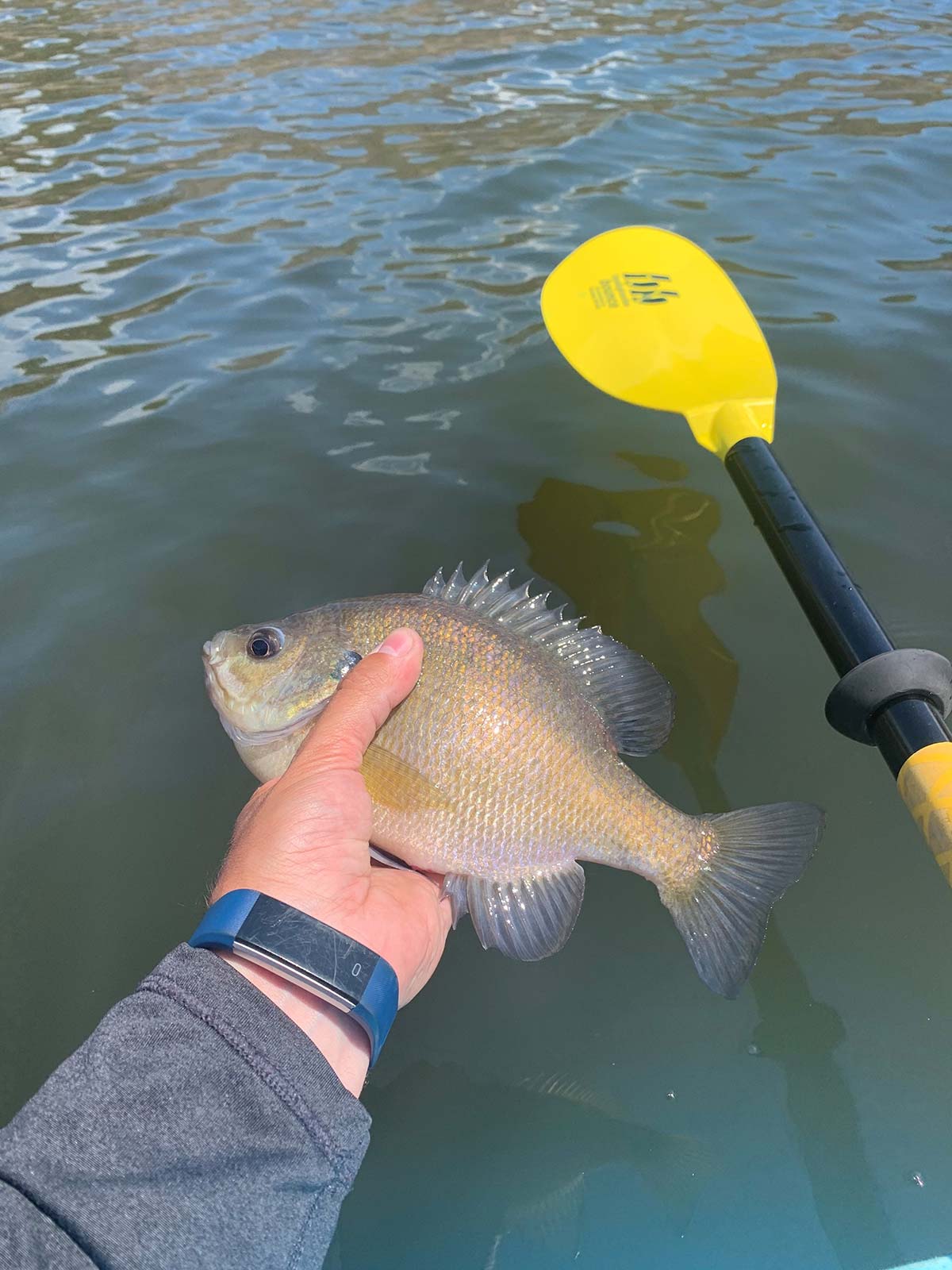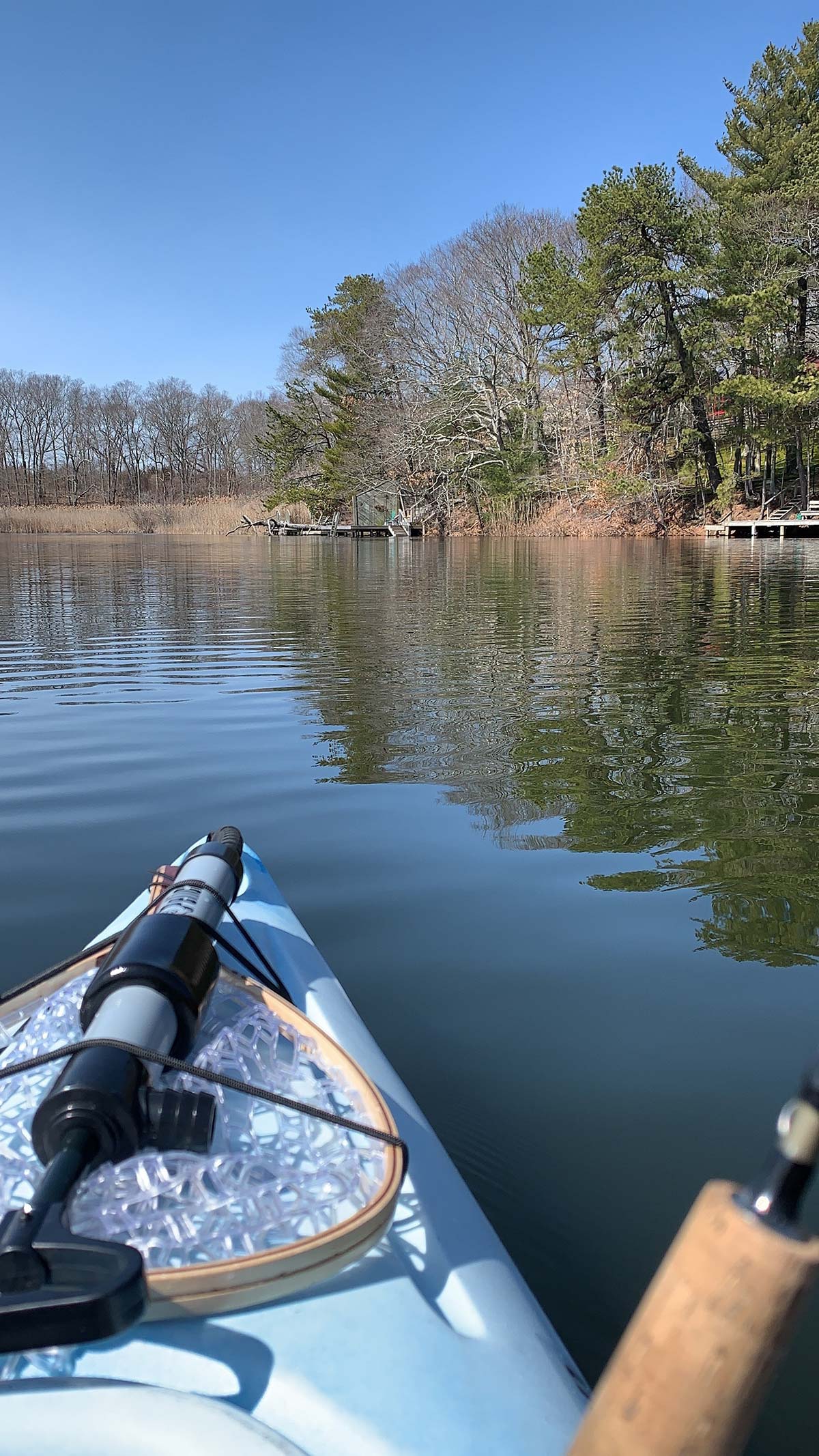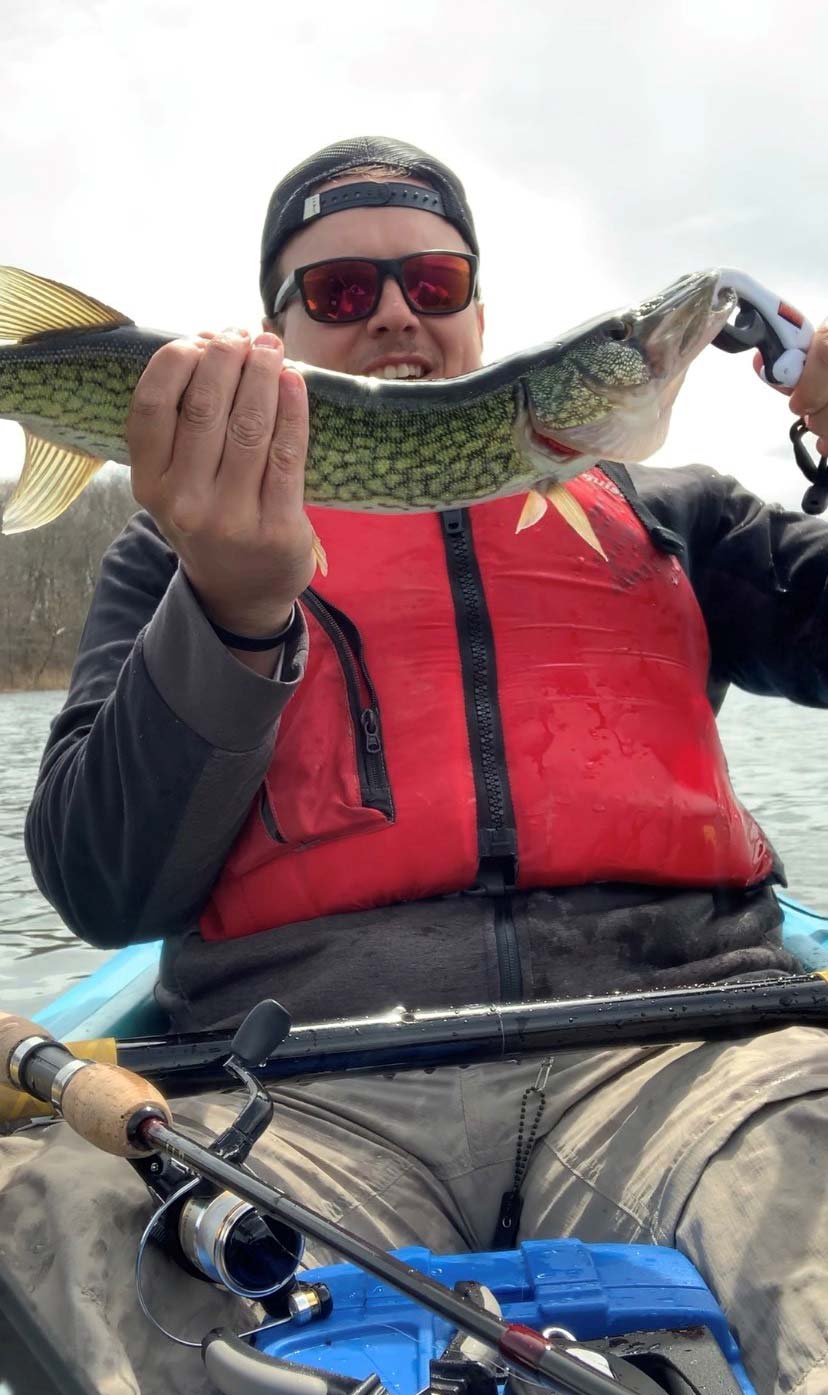It’s important to plan ahead on how you will be fishing during any given excursion.
In my opinion, there are very few things as thrilling as feeling the thud of a fish striking your lure in 20 plus feet of water from the seat of a kayak. Setting the hook becomes that much more exciting, with merely a few inches of plastic separating you from all that dwells beneath the water’s surface. Although I must say, as a kayak instructor, there’s nothing I enjoy more than introducing people to the sport of kayaking and getting new paddlers on the water; and kayak fishing has the potential to completely change the game for so many shoreline anglers in both salt and freshwater.
With access to new depths, more structure and newly accessible areas to cast, it’s very exciting to get out on the water for the first time. However, before rushing to get out there and fish it’s important to familiarize yourself with the best-suited kayak option for your fishing needs, and the gear that will prepare you for handling virtually any scenario once out on the water.
Kayak Selection

The most important thing when it comes to kayak fishing, aside from wearing a personal flotation device (PFD) or drysuit in cold water, is choosing the right boat for your paddling experiences. Several types of kayaks are great for fishing, but each serves a different purpose based on the type of water on which they’re designed to be paddled. Generally, there are two variations of kayaks: “Sit-In” kayaks in which the paddler is seated quite literally in the cockpit. The other being: “Sit-On-Top” kayaks where there isn’t a cockpit and the paddler sits exposed on top of the kayak, without any protection from the elements. Common sit-in kayaks are recreational kayaks, touring kayaks and white-water kayaks (not used for fishing). Nowadays, there are also tons of options for kayaks designed specifically for fishing, most of which tend to be Sit-On-Top; and still, there is more to be considered before a decision is made on which boat is suitable for an anglers needs.
Consider these factors that will all impact your paddle experience before going forward as a kayak angler: boat type, boat weight, boat length, what you’ll be targeting and where you’ll be paddling. A sea kayak (also called a Touring kayak) tends to be long and narrow with a pointed bow and stern, and a smaller “sit-in” cockpit to allow for more stability, control and protection from rough conditions. These boats tend to be anywhere from 13 to 16 feet in length, 60 to 100 pounds and the shape is specifically designed to cut through waves steadily, with speed and minimal impact. If you plan on fishing and paddling in any open tidal waters, this type of boat is a great option, especially when equipped with a rudder system. There are plenty of accessories and attachments to improve this vessel for angler’s purposes as well.
A recreational sit-in kayak, on the other hand, has the potential to do the job, but may be a more viable option for anglers in shallower bays and tidal creeks, as well as in rivers, lakes and ponds. They tend to be anywhere from 9 to 12 feet long and much lighter in weight ranging from around 30 to 60 pounds. The bow and stern are more gradually pointed, the boat is wider and the cockpit will be more open making for easy entry and exit, but also leaving the paddler more exposed to the elements and rough conditions. These boats are the generic type you’ll find at any Dick’s Sporting Goods, and should absolutely not be used on big water- but by all means, give them a go on your local pond!
Today, brands like Old Town and Hobie are making kayak fishing popular with very long and wide sit-on-top kayaks, designed to be specifically stable and versatile enough for anglers to kayak fish anywhere; from trolling out in ocean swells to standing and casting on a glassy lake. There’s a boat out there for you, it just takes knowing what to look for!
“Must-Haves” Onboard

When kayak fishing on a brisk early spring morning in 2020, I had dialed into the pre-spawn largemouth bass bite on a local lake. Regrettably, I decided to overlook bringing my net and lip grip on the kayak on this day, and as luck would have it I just so happened to land one of the biggest chain pickerel of my life. Removing a hook safely from a toothy fish while it thrashes without the limitations of a net, is surprisingly difficult. Without a lip grip on my side either, it became apparent my pliers and a proper gill-plate grab would have to do the trick here. All I wanted to do was release this slime dart without having it go belly up. I was unprepared, and that made me anxious, but after removing the hook from deep in its mouth and reviving the fish for a minute, it swam off to entertain another angler someday. The feeling of being unprepared for any given situation when I am kayak fishing is daunting to me now, so I have a personal list of essential fishing and paddle gear that I keep readily equipped in my boat on every outing regardless of the environment in which I am paddling.
The hardest part about loading your kayak with gear is to avoid both overloading it and under loading it. In order to maintain balanced weight distribution and keep from being bogged down (or sinking!) try to pack lightly, but know it is equally as important to avoid packing too little gear. There is no worse feeling than getting out onto the water and into some fish only to realize you forgot something essential (in my case, a net or lip grip). When it comes to the kayak fishing essentials, the gear and equipment can be broken down into: “fishing must-haves” and “kayak must-haves”.
Whenever planning a paddle it’s crucial to have a PFD, portable water bottle, a first aid kit, an emergency whistle, a headlamp and a backup paddle or a carabiner with rope or paracord to initiate a tow when paddling with others (should you ever lose or break your paddle). It’s also essential to bring a bilge pump when using a sit-in kayak to self-rescue and/or pump out water excess water in case of emergency.
The kayaking essentials, most importantly, will help you save your life, but not necessarily your catch; that’s why it is also important to have an appropriately sized net for landing and releasing fish specific to your outing. As I learned with the feisty and slimy chain pickerel, it helps to anticipate the unexpected when planning ahead for what gear to pack. Even being dialed into a pre-spawn bass bite didn’t guarantee there was no other aggressive fish down there waiting for a meal. I tend to pack my lip grip, pliers, line nippers, tape measure, scale and minimal tackle into a chest pack or small tackle organizer for easy access whenever necessary.
Planning Ahead

Lastly, it’s important to plan ahead on how you will be fishing during any given excursion. With a kayak, there is much more access to ledges, structures and forms of cover that may have been otherwise inaccessible from the shoreline. I tend to personally try to fish points, where land protrudes outward as these formations often indicate depth change and general areas of moving water which commonly holds baitfish. Another example of an approach to take from a kayak would be fishing docks, piers and downed trees. When fishing docks on both salt and freshwater, be sure to be respectful of others nearby and be precise with your casting. Often times docks and fishing or boating piers will hold fish lingering beneath them to avoid other predators, or to prey on smaller fish. This is a common behavior of largemouth bass in particular, as they will cling to structure of any type when waiting for an unsuspecting meal to swim by, or taking cover from birds of prey, bigger fish and even us anglers! Map out how you will fish during any given outing based on the conditions ahead. It never hurts to check the water temperature, air temperature and wind speed/direction before heading out to your spot.
Being ready for any situation on the water really can’t hurt; think about it- you don’t want to lose out on a trophy fish because you didn’t plan! Having the right boat and proper gear for your outings can truly make or break your fishing experience. If you are new to paddling and/or fishing, take some time getting used to paddling and maneuvering your boat while managing your rods and gear before doing anything serious. Get to know your boat and get to know your water, the same way you would break in a new rod and reel combo. There is a quote I take with me on all fishing excursions, but specifically on my kayak outings, from an American Civil Rights leader named Whitney M. Young who once said: “It is better to be prepared for an opportunity and not have one, than to have an opportunity and not be prepared.”
Take inventory of your gear and review your goals before each outing; plan ahead, practice learning your local waters and kayak fishing will be guaranteed to change your fishing experience for the better.



